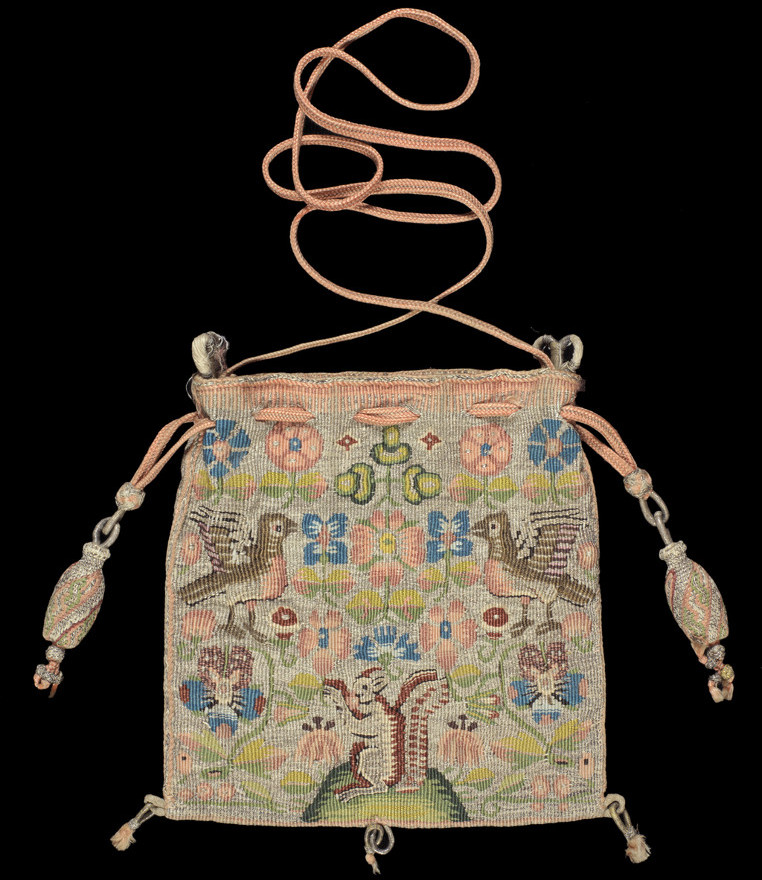
Size : 12.7 x 10.9 cms; 5 x 4 ¾ inches Materials : wool, silk, gilt thread Warp Count: 12/13 per cm; 28/29 per inch Acquisition : Bequest of Dr Louis Clarke Museum reference : t.8-1961
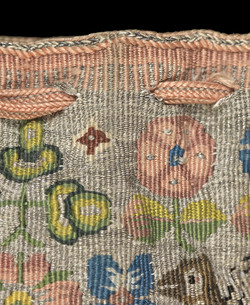
Woven with a high percentage of silk thread and an even higher silver thread content the purse measures 12.5 x 10.9 cms (5 x 4 ¾ inches). It is made up from a single strip of tapestry, sewn together along its selvedge for strength. The narrow galloon contains a single gilt thread and is used as a decorative finish to the purse’s opening; it is woven in deep pink weft thread covering differing lengths of the warp. When the purse was used therefore the warp threads thus remained vertical adding strength – and thus longevity – to a relatively frail object. The piece could have been woven on a very small loom, possibly even on an inkle loom.
A double-drawstring, finished with tassels, was threaded through the openings in the border, and served to pull the purse shut.

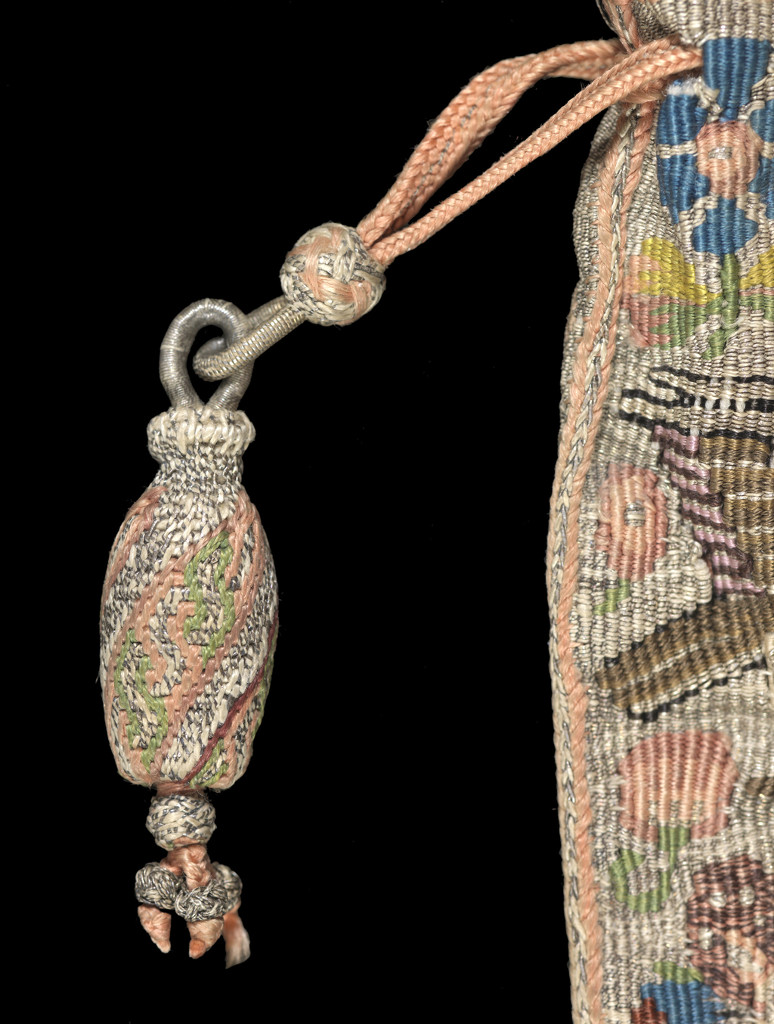
A single hanging cord was attached through loops at the top corners from which the purse may have hung from a clasp on a belt.
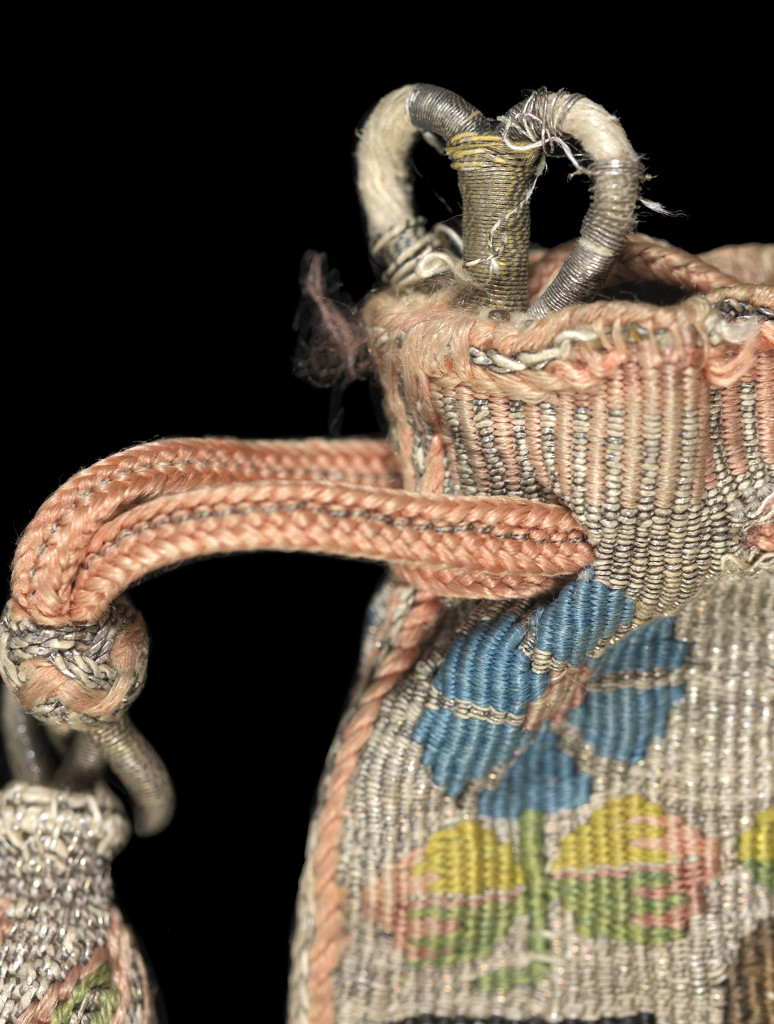
Three other, smaller tassels dangled from loops at the centre and on the bottom corners of the purse.
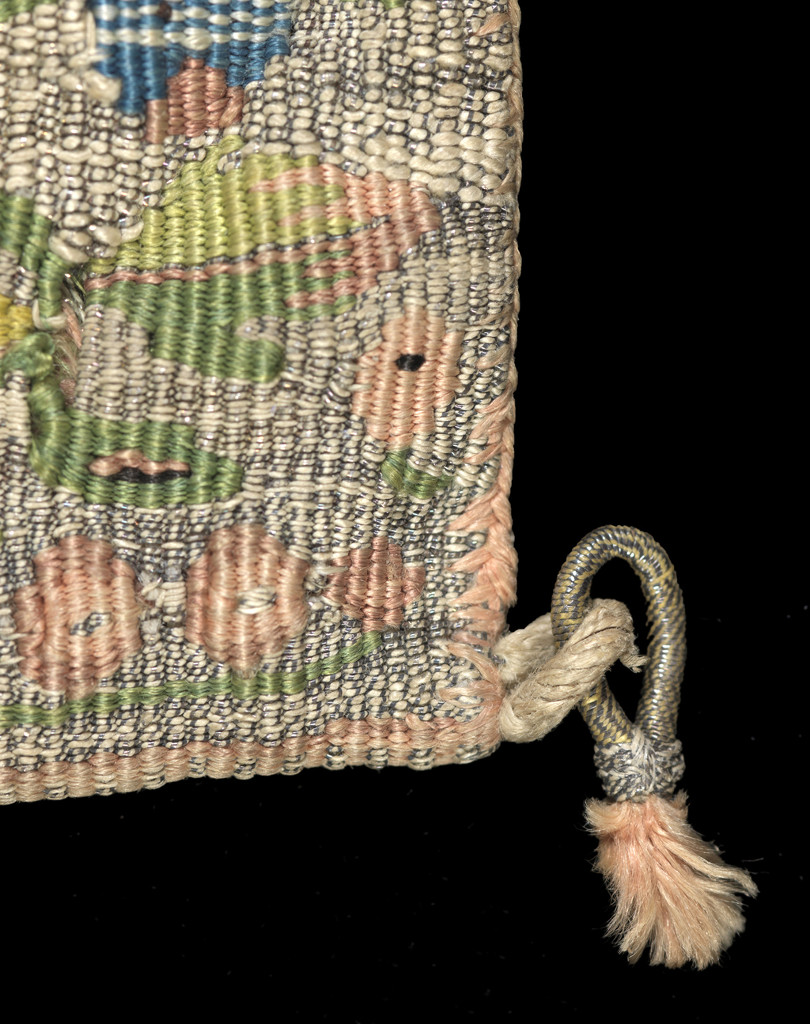

The pattern is regular; at the bottom the squirrel sits between two trailing sprays of honeysuckle; slightly higher, almost a second row, are two cinquefoil heads and two much smaller blossoms; above that two winged birds, perched above toadstools, stand guard over three unevenly sized flower heads placed between them. The top row consists of four flower heads worked in alternating colours and separated into two groups by a spray of acorns, symbolizing, and acknowledging, the accumulation of wealth.6
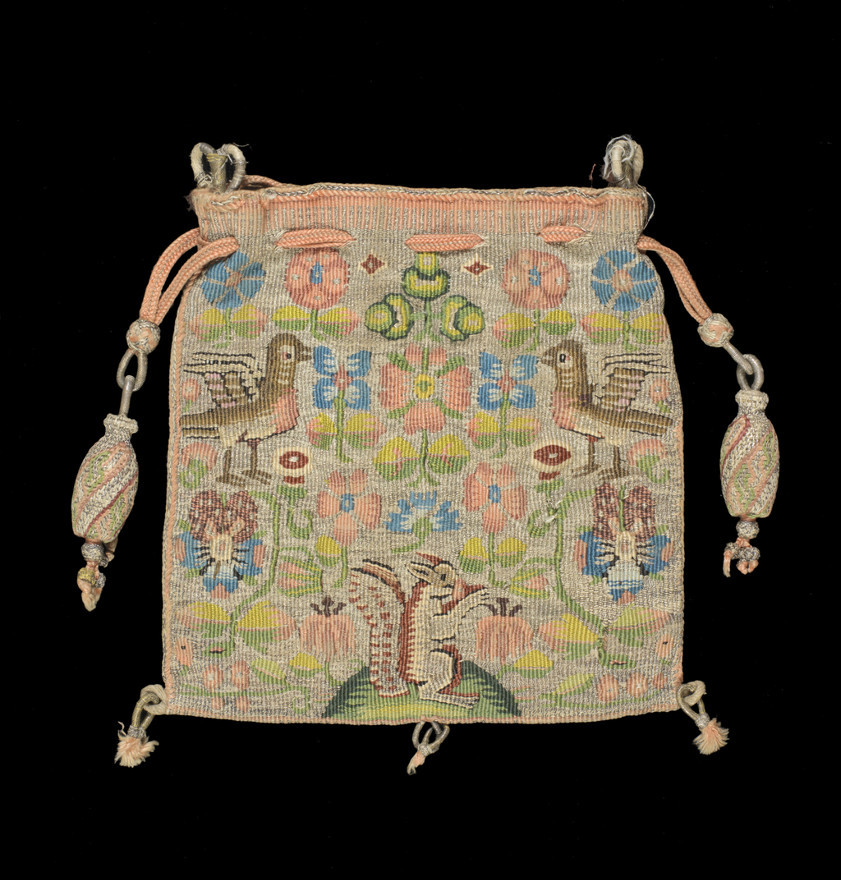
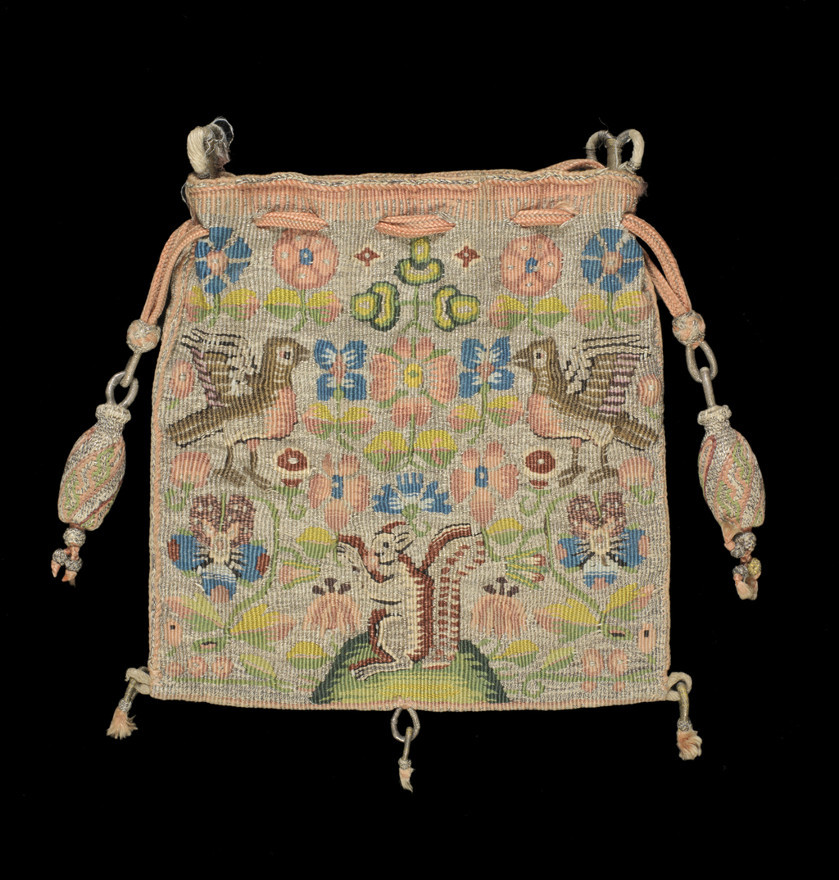
The two sides of a tapestry-woven purse t.8-1961. © Fitzwilliam Museum, Cambridge
The same design was used on both sides apart from one element - the squirrel on its haunches is depicted slightly differently on each side.
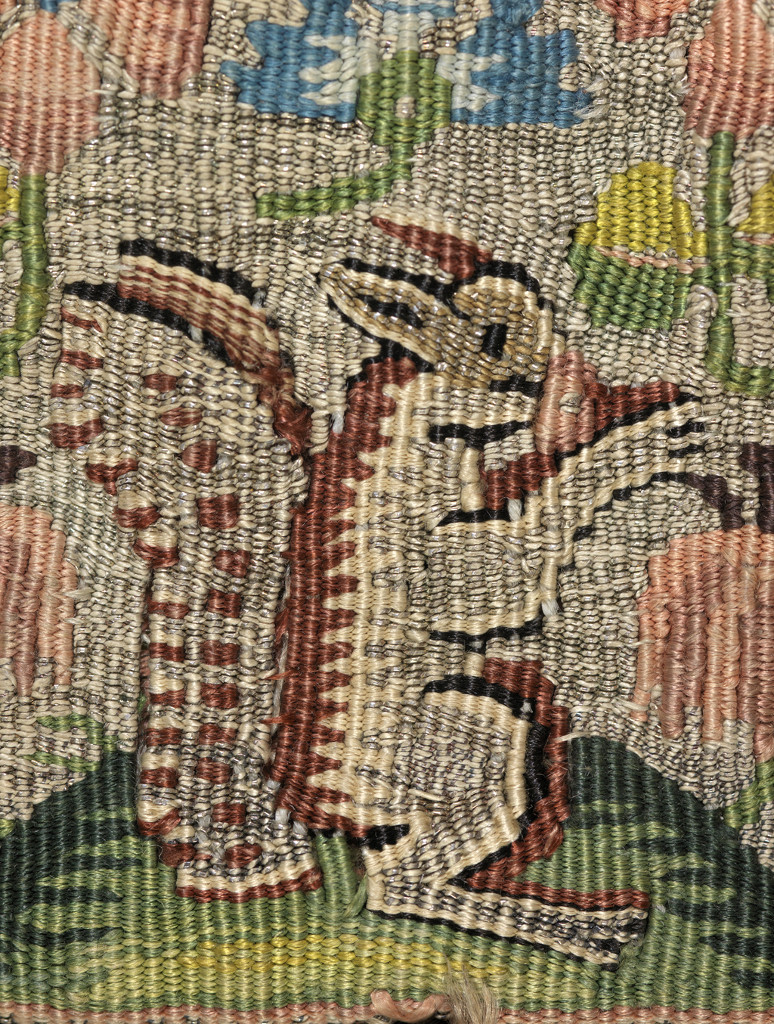
The piece is an all too rarely preserved fashion accessory which more commonly survive as embroidered pieces7. Its pattern can be paralleled in embroidered examples of similar date and, like the tapestry-covered Bible and the pair of tapestry-woven glove cuffs in the Victoria and Albert Museum8 , may well have been borrowed from needlework examples.
Though previously associated with the products of Sheldon’s venture in Barcheston, Warwickshire, it is, as we shall see, at least as likely to have been the product of the small workshops established by émigré weavers in London where it would find its greatest sale potential.
-
Claire Wilcox, Bags, V&A Publishing, London 1999, 2008, p. 23.top
-
Wilcox Bags, p. 23; and p. 22 pl 6, V&A T55.1927 with a five-acorn sprig amidships, p. 28, plate 11, T53.1954 a very similar layout of flowers but without acorns. Compare t.55-1893.top
-
Book cover, Victoria and Albert Museum Pair of gloves, Victoria and Albert Museum top




